|

Return to: General Information
The Mason Vision
Our Motto
Freedom and Learning
Mission
A public, comprehensive, research university established by the Commonwealth of Virginia in the National Capital Region, we are an innovative and inclusive academic community committed to creating a more just, free, and prosperous world.
Our Values
Our students come first
Our top priority is to provide students with a transformational learning experience that helps them grow as individuals, scholars and professionals
Diversity is our strength
We include and embrace a multitude of people and ideas in everything we do and respect differences
Innovation is our tradition
We strive to find new and better ways to deliver on our mission while honoring time-tested academic values
We honor freedom of thought and expression
We protect the freedom of all members of our community to seek truth and express their views
We are careful stewards
We manage the economic and natural resources entrusted to us responsibly and sustainably
We act with integrity
We hold ourselves to the highest ethical standards as educators, scholars, students and professionals
We thrive together
We nurture a positive and collaborative community that contributes to the well-being and success of every member
The Mason Graduate is…
… an engaged citizen:
- ethically oriented and committed to democratic ideals
- respectful of individual differences, rights and liberties
- knowledgeable of important issues affecting the world
- focused on the well-being of others, today and tomorrow
- committed to building a just society
… a well-rounded scholar:
- thinks critically and creatively and demonstrates professional competence
- possesses an inquisitive nature
- appreciates science, humanities and the arts
- skilled as a communicator
- committed to lifelong learning
… prepared to act:
- innovative, resourceful and entrepreneurial; ready to do or create a job
- interested and practiced in working with individuals from other cultures, backgrounds and perspectives
- equipped to make positive and meaningful changes in society
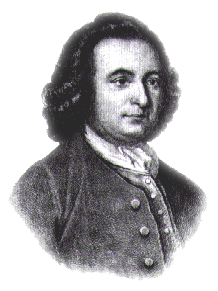 George Mason, the Man George Mason, the Man
George Mason was the central genius of the American Revolution. He was the primary author of both the Virginia Declaration of Rights and Virginia’s first Constitution, written in May and June of 1776, which served as examples for other states. He was highly regarded by contemporaries for his intellect and abilities. Thomas Jefferson described him as “a man of first order wisdom,” and James Madison described him as “the soundest and clearest reasoner I have ever listened to.”
Always a reluctant public servant, he has been referred to as the “forgotten” or “unknown” founder. Most content at Gunston Hall, his home in Fairfax County, he participated in politics only out of a sense of duty. Unconcerned with fame or his reputation in history, he preferred the happiness of “a private station” to “the vexations of public business.”
In 1787, Mason attended the Constitutional Convention at Philadelphia. James Madison, although known as the “Father of the Constitution,” attributed much of the final document to Mason. Mason refused, however, to sign the Constitution, as it did not guarantee the rights of the people. By his principled opposition, Mason ultimately assured the adoption of the federal Bill of Rights based on his Virginia Declaration of Rights.
As demonstrated in the language set forth in Mason’s own documents, no other founder was more acutely aware of the moral depravity of slavery and the contradiction it created. He proposed an elimination of the slave trade as a first step toward eventual emancipation. The institution of slavery was so ingrained in a pre-industrial agricultural society that it was only ended by the American Civil War.
If patriotism is defined as selfless devotion to a country conceived in liberty, then George Mason is our purest Patriot. On April 12, 1996, a seven-foot statue of him presenting his handwritten draft of the Virginia Declaration of Rights was dedicated at the university. This statue serves as a constant reminder of the ideals of freedom and learning most important to Mason the man and the university that bear his name.
University History
The idea for George Mason University was born in 1949 when the Northern Virginia University Center, essentially an adult-education extension of the University of Virginia at Charlottesville, opened under the direction of John Norville Gibson Finley. In 1955 and again in 1956, the Board of Visitors of the University of Virginia and Virginia legislature authorized the establishment of a two-year branch college to serve Northern Virginia.
The university’s formal history began in 1957 as University College, the Northern Virginia branch of the University of Virginia, offering courses in engineering and the liberal arts. It opened in a renovated elementary school in the Bailey’s Crossroads area with an enrollment of 17 students.
Eager to support the fledgling institution, the Town (now City) of Fairfax purchased 150 acres in 1958 and donated the land to the University of Virginia for a permanent branch campus. The following year, the University of Virginia Board of Visitors selected the name George Mason College. Construction of the campus’ first four buildings was completed in 1964. In September of that year, 356 students began their studies in the new classrooms.
In March 1966, the General Assembly authorized the expansion of George Mason College into a four-year, degree-granting institution and gave it the long-range mandate to expand into a major regional university. The first senior class received degrees in June 1968. Graduate programs began in September 1970, with the first master’s degrees conferred in June 1971. The George Mason College Board of Control, supported by citizens of the cities of Alexandria and Falls Church, and Arlington and Fairfax counties, acquired an additional 422 acres. By the end of 1970, the college’s Fairfax Campus reached 572 acres; it is now 677 acres.
In 1972, the Board of Visitors of the University of Virginia recommended that the college separate from its parent institution. On April 7 of that year, the governor signed the General Assembly legislation that established George Mason University as an independent member of Virginia’s system of colleges and universities.
Since 1972, the university’s development has been marked by rapid growth and innovative planning. In 40 years, enrollment has risen from 4,166 to more than 33,000 students. In 1979, Mason was given the authority to grant doctoral degrees and began offering programs at this level. In the same year, the university acquired what became George Mason University School of Law, located on the Arlington Campus.
In 1985, Mason partnered with area businesses to develop an engineering program geared toward the emerging information technology field and started what is now the Volgenau School of Engineering. With the Volgenau School, Mason was the first institution in the country to offer a doctoral degree in information technology.
The establishment in 1990 of the Institute of the Arts, which became the College of Visual and Performing Arts in 2001, solidified the university’s commitment to make the arts an integral part of students’ lives. The Center for the Arts and the arts complex, which includes art galleries, studio and rehearsal space, and performing venues such as Harris Theatre and TheaterSpace, are all components of the college.
On the Fairfax Campus, the innovative George W. Johnson Center was dedicated in April 1996. By combining student life resources with educational support facilities such as an interactive library, Mason created the learning workspace of the future. Educational administrators from around the world have toured the center.
The university’s facilities continue to grow. In 2006, the university opened its first facility dedicated to research, Research Hall, which contains an observatory and laboratories for a number of campus research centers. In 2009, the university opened the Long and Kimmy Nguyen Engineering Building, which is now the largest academic building on campus. In addition to being the university’s first LEED-certified building on the Fairfax Campus, the Nguyen Engineering Building is also the first in Virginia’s public university system to offer corporate lease space. Also opening in 2009 was the Art and Design Building, which is now home to the School of Art.
Masonvale, a townhome community on campus that provides short-term housing for faculty and staff, opened in late 2009. The Hylton Performing Arts Center on the Prince William Campus celebrated its grand opening in May 2010. On the Arlington Campus, Founder’s Hall was ready for occupation by the School of Public Policy and other units in early 2011.
The university’s growing reputation as an innovative educational leader is rooted in Virginia’s strong educational tradition. By emphasizing research and study in fields relevant to government and area economic centers, Mason has created a curriculum and mission to meet the needs of Northern Virginia’s extraordinary cosmopolitan constituency. The university has also achieved national distinction in many areas. Its reputation continues to grow as Mason provides educational, cultural, and economic resources for the people of Virginia, the nation, and the world.
Faculty and Students
The university’s more than 1,400 full-time instructional and research faculty members are experts in a broad range of fields. They have published widely, contributed to major research findings, and consulted with government and business officials. Drawing prominent scholars from all fields, Mason’s outstanding faculty have received grants and awards from the Guggenheim Foundation, the Templeton Foundation, the National Science Foundation, the National Endowment for the Arts, and the National Endowment for the Humanities; they have won numerous awards such as Fulbright Scholar grants, Pulitzer Prizes, Mellon Fellowships, Institute of Electrical and Electronics Engineers Centennial Medals, and Nobel Prizes. More than 47 endowed chairs at the university have also brought many internationally renowned artists and scholars to campus.
Of particular interest to undergraduates are the Robinson Professors, outstanding scholars in the liberal arts and sciences who have come to Mason from prestigious positions elsewhere. They are concerned with broad and fundamental intellectual issues and are dedicated to undergraduate teaching and working with Honors College students. In 1984, the first Robinson Professors joined the faculty as the result of a generous bequest from the estate of Clarence J. Robinson.
The majority of the university’s more than 33,000 students are from Virginia; however, all 50 states and Washington, D.C., as well as 130 countries, are represented in the student body. While full-time undergraduates make up the largest student group, part-time graduate and undergraduate students account for nearly half of the student population. Mason welcomes qualified students with a wide range of interests and backgrounds.
Accreditation
George Mason University is accredited by the Commission on Colleges of the Southern Association of Colleges and Schools to award bachelor’s, master’s, and doctoral degrees. Contact the Commission on Colleges at 1866 Southern Lane, Decatur, Georgia 30033-4097 or call 404-679-4500 for questions about the accreditation of George Mason University.
Individual programs or units may also be accredited by discipline-specific agencies.
George Mason University Foundation
Established in 1966, the George Mason University Foundation Inc. works to advance the aims and purposes of the university. It is a 501(c)(3) nonprofit foundation organized and operated exclusively for the benefit of the university.
The foundation assists Mason in generating private support and manages, invests, and administers private gifts, including endowment and real property. The foundation is governed by a volunteer Board of Trustees. The foundation president and chief financial officer report to the Executive Committee of the Foundation Board and work with the vice president of development and alumni affairs to support the private resource needs of the university.
|
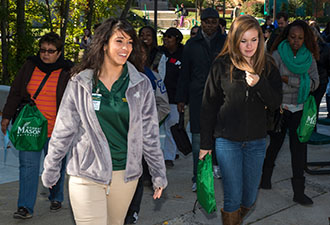
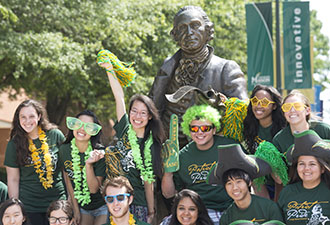
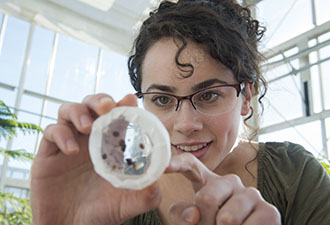
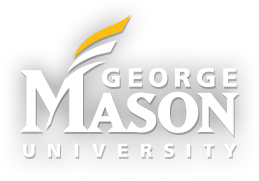
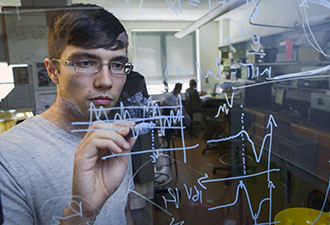
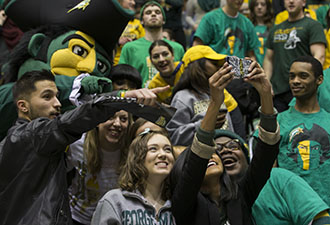
 Print-Friendly Page
Print-Friendly Page
